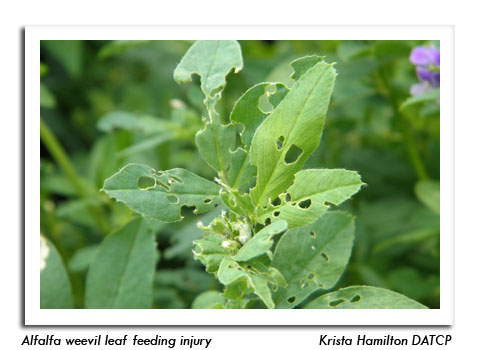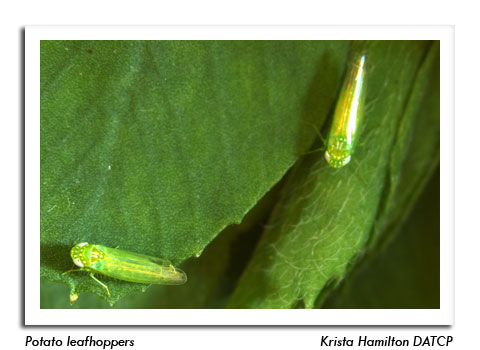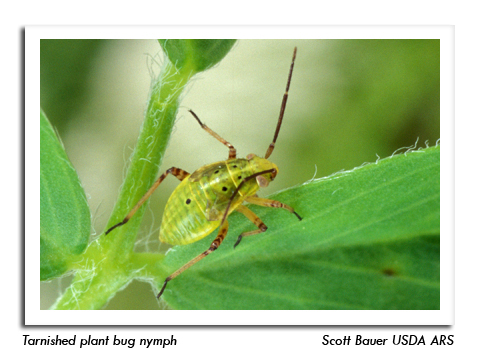
 |
|
|
Forages & Grains
Volume 59 Number 6 Date 06/05/2014 ALFALFA WEEVIL - Larval populations in the southern half of the state continue to be low. Surveys in Adams, Buffalo, Columbia, Green Lake, Juneau, La Crosse, Marquette, Portage, Trempealeau, Waupaca and Waushara counties found counts of 0-48 larvae per 100 sweeps, with an average of only eight per 100 sweeps. Rates of leaf tip feeding injury associated with this insect were less than 5% in the fields sampled, but defoliation is expected to become more conspicuous next week as larvae transition into the larger and most destructive third and fourth-instars. Any first-crop alfalfa that is not cut soon could be severely degraded. Management plans at this time should include harvesting fields during the next rain-free period and monitoring regrowth for carryover of weevil larvae. PEA APHID - Densities varied from 0.1-2.7 aphids per sweep and averaged 2.0 per sweep, which is a minor increase from last week's average of 1.6 per plant. The appearance of winged aphids, an indicator of imminent dispersal from alfalfa into nearby pea and vegetable fields, was noted in most of the 40 fields surveyed from May 29-June 4. POTATO LEAFHOPPER - Migrant adult populations are still well below-threshold at 0-0.2 per sweep. The weekly high count was found near Galesville in Trempealeau County. Reproduction has not started as of June 4. PLANT BUG - Populations increased sharply this week with the addition of many small nymphs. Representative counts now range from 0.1-2.0 per sweep in the south-central, central and west-centrals areas compared to less than 0.3 per sweep found during the previous week's survey. Both the tarnished and alfalfa plant bug species were observed in sweep net collections. -- Krista Hamilton, DATCP Entomologist 



|
|
|